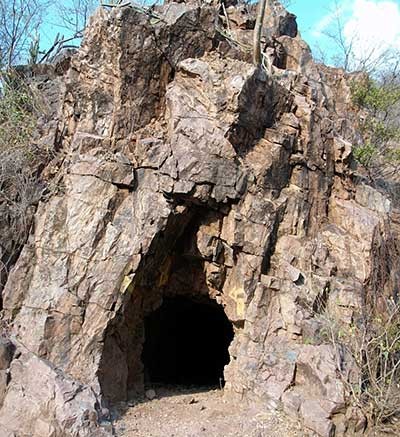VANCOUVER — Epithermal gold deposits tend to form in clusters that mimic the spacing of active volcanoes, and they typically go hand-in-hand with gold-copper porphyry deposits, polymetallic skarns and other intrusion-related systems.
So for Nicaragua — whose geology spans 80 million years of volcanism, and boasts three prolific mining districts that together are coined the “Golden Triangle” — it’s no wonder the country has gained the attention of gold and base metal enthusiasts.
The triangle’s main districts — La Libertad, Le Limon and Bonanza — have historically produced over 8 million oz. gold dating back to the nineteenth century.
Some of the most attractive locations for epithermal gold systems in Nicaragua lay along the edges of a northwest-striking graben called the “Nicaragua depression.” It’s 40 km wide and trends along the length of the country’s entire western coast.
A graben offers up cracks in the crust that helps hot, gold-rich magma migrate towards the surface, where it cools and deposits minerals and gold into the veins.
This structure results in gold veins that can tote big strike lengths but are limited in their down-dip extensions — making for high-grade and open-pit operations.
Comprising the southernmost point of the triangle is B2Gold’s (TSX: BTO; NYSE-MKT: BTG) operating La Libertad gold mine, 178 km east of the capital of Managua.
Veins here are steeply dipping, trend for 4 km and extend to 250 metres deep, with reserves totalling 9.4 million tonnes at 1.65 grams gold per tonne as of Dec. 31, 2013.
B2Gold’s Limon gold mine is 100 km northwest of Managua, situated along the eastern margin of the Nicaragua depression. The mine has operated since the 1940s and has produced over 3 million oz. gold, and unrecorded quantities of silver.
B2Gold mined 48,045 oz. gold from Limon’s open-pit and underground mining operations last year, and it continues to expand the resource with brownfield exploration.
About 30 km south of Limon is Condor Gold’s high-grade La India deposit, which has historically produced an estimated 1.7 million tonnes at 13.4 grams gold for 576,000 oz. gold from 1938 to 1956.
Occurring within 9 km of La India are additional veins and breccias that coalesce into zones up to 25 metres wide. Condor has outlined a combined inferred and indicated resource of 18.1 million tonnes of 4 grams gold amounting to 2.3 million oz. gold, and has completed prefeasibility studies.
Mineralization is not confined to the bounds of the Nicaraguan depression. About 180 km northeast of Managua there’s a growing cluster of epithermal and skarn systems that define the third and final point of the Golden Triangle: the Bonanza district.
The nucleus of the district is Hemco’s operating Bonanza gold mine, which taps into an epithermal gold system that has yielded over 2.7 million oz. gold.
Forty kilometres southwest of Bonanza is the La Luz skarn, which represents a type of deposit that forms when an intrusion rich with precious and base metals stews along a contact with reactive sediments.
La Luz produced 7 million tonnes of 4.4 grams gold for a total of 2.3 million oz. gold over its 50-year history before its doors closed in 1968. Calibre Mining (TSXV: CXB; US-OTC: CXBMF) has since incorporated the skarn into its growing portfolio of epithermal and skarn targets in its wholly owned Siuna project.
With so much intrusion-related gold in the district, it’s not hard for explorers to imagine a porphyry system somewhere nearby.
Calibre joined up with B2Gold in 2013 and began exploring the Borosi concessions, 30 km southwest of Bonanza. Together they have identified a gold-copper porphyry system that runs to 250-metre depths at the Primavera project. Significant intervals include 276.8 metres of 0.5 gram gold and 0.2% copper, and exploration continues.
Breaking from the cluster of activity, Golden Reign Resources (TSXV: GRR; US-OTC: GRGNF) has focused on a 25 km prospective belt of historic gold workings between the La Libertad and Bonanza districts, 15 km southeast of the border with Honduras.
Its flagship San Albino project is a touch different from the other epithermal systems, as its veins are more shallow-dipping and show greater down-dip continuity.
It’s considered more of an orogenic-style deposit, where a thickening crust drives geothermal gradients enough to mobilize gold-bearing fluids into shallower levels.
The San Albino resource was first announced in 2012, but has since seen a 67% increase in indicated resources to 827,000 tonnes grading 5.86 grams gold and 10 grams silver for 155,800 contained oz. gold and 265,000 contained oz. silver, and an 8.5% increase in inferred resources to 3.4 million tonnes at 7.70 grams gold (855,000 oz. gold) and 11.6 grams silver (873,300 oz. silver).
Golden Reign reckons it has a good chance of expanding on that resource, noting that the deposit is open at all ends and subject to further exploration. The company is working on delivering a preliminary economic assessment shortly.
According to a Nicaragua Chamber of Mines report, international partners are only exploring 10% of the Golden Triangle.
Nicaragua has been rated in a 2014 Doing Business report by the World Bank as the number-one location in Central America for investor protection, contract enforcement and starting a business.
So with prolific and rich mining districts in a country that’s open for business, it’s easy to say that blue-sky awaits explorers and developers in beautiful Nicaragua.


Be the first to comment on "Explorers enjoy the blue-sky in Nicaragua"